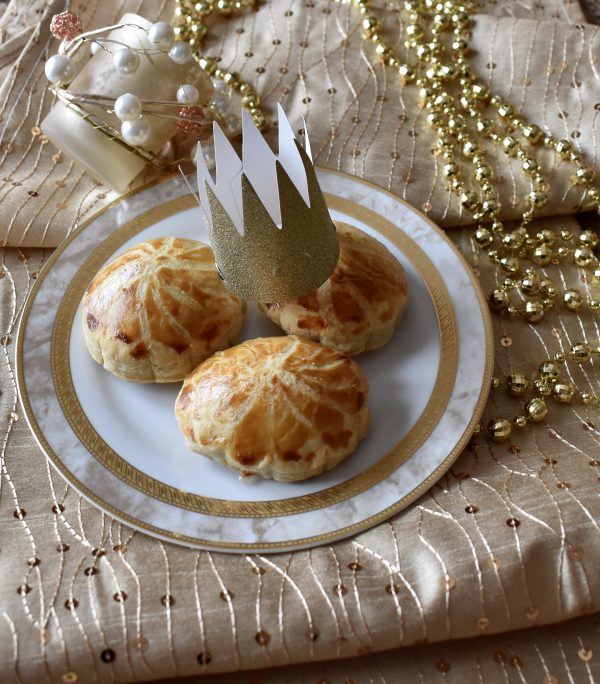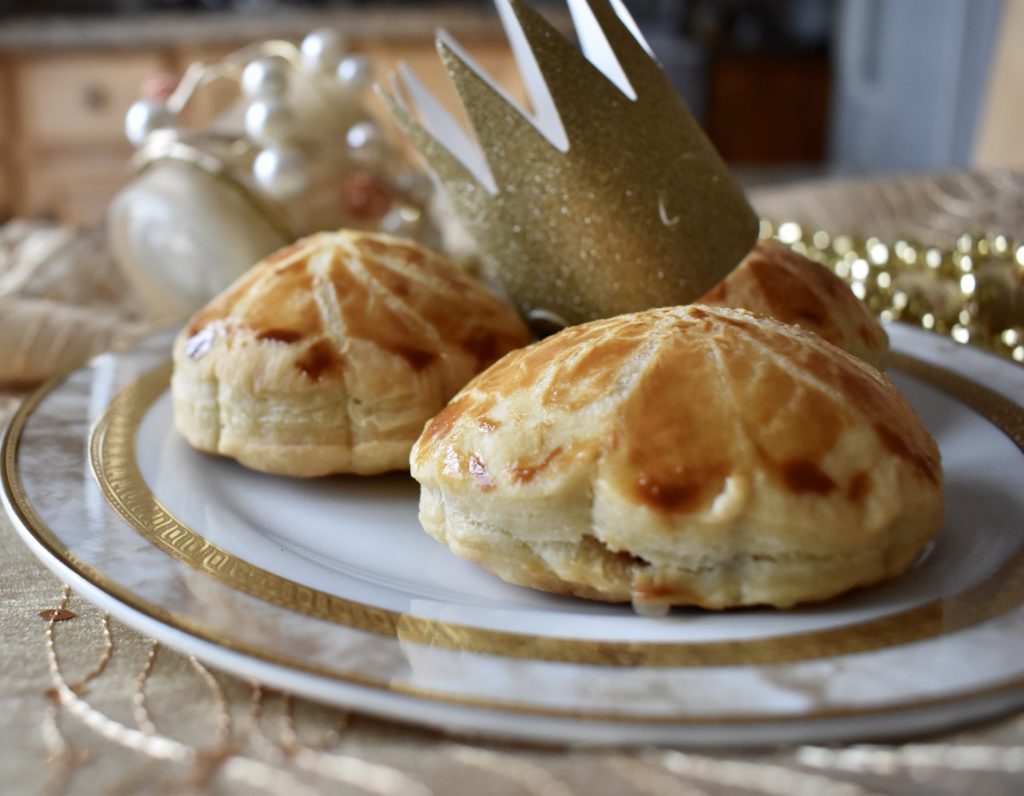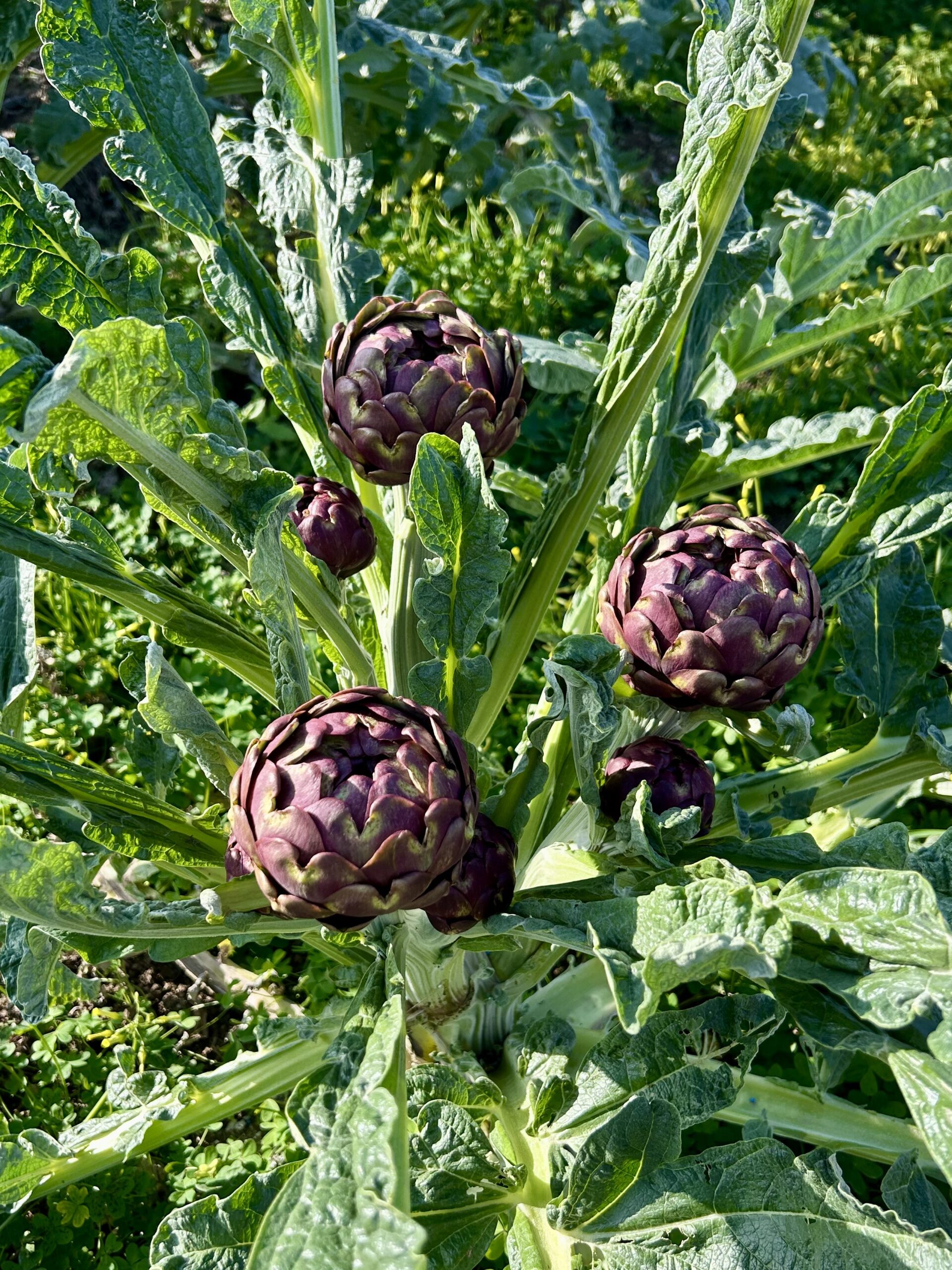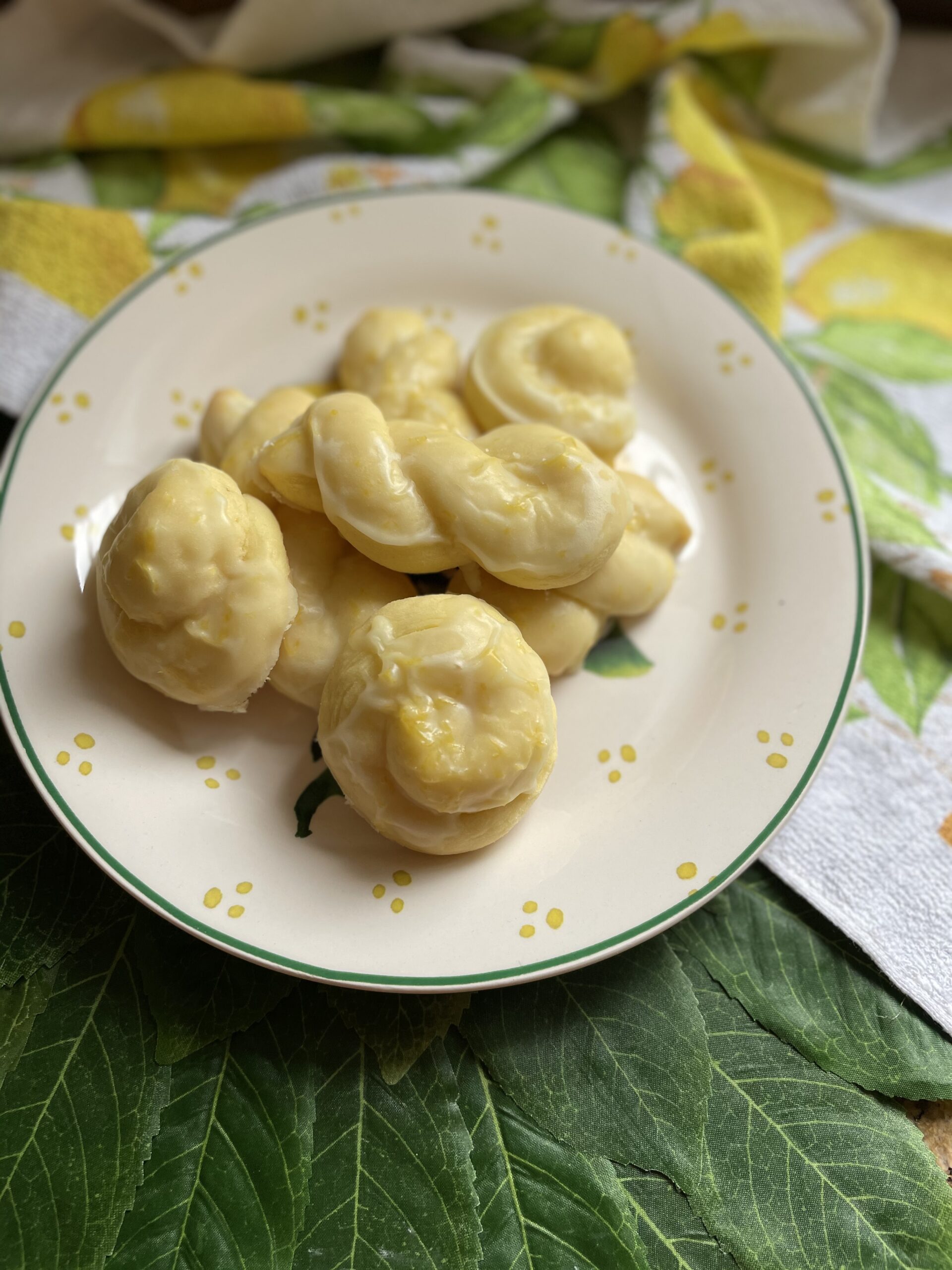If you’re a fan of Christmas carols as am I, then you undoubtedly know that there are Twelve Days of Christmas to celebrate; beginning on December 25th and concluding on January 6th This date is celebrated globally as The Epiphany, also known as the Feast of the Three Kings, Little Christmas and La Befana, and it is the final hoorah to wrap up the holidays.
The Feast of the Epiphany is celebrated in many nations in a myriad of ways, including the preparation of traditional treats. While there are several noble morsels including an Italian merengue type cookie known as the carbone dolce della befana (the sweet coal of the Befana), there is one in particular that appeals to my sweet tooth the most, Galette des Rois (King’s Cake).
Many of the cultural festivities include the custom of gifting “king cakes”(never mind twelve drummers drumming) as a celebratory close to the Christmas season. These sweet loaves come in varying forms and names across the globe and often involve the practice of baking a trinket inside. When the cake is sliced and served, the recipient of the charm is named king or queen with a paper crown that is typically used as an adornment.
In Spain and Mexico, the king cake takes the form of a sweet bread known as Rosca de Reyes baked into the shape of a ring and garnished with strips of dried fruit; similarly, in Switzerland buns baked up into a crown and topped with citrus peel make up their Three Kings Cake; in Portugal a similar bread ring studded with raisins and crystallized fruit is known as Bolo Rei; and in the US it is quite common to see colorful King’s Cake during carnival season that are filled with cinnamon, glazed white, and coated in green and purple colored sanding sugar. The fluffy Italian panettone has also been associated with these festivities and served up as a king cake.
In other countries across the globe it is more of a traditional cake such as the Ciasto Trzech Kroli, the sponge cake with almond cream filling made in Poland; the rich, dense fruitcake served by the English known as the Twelfth Cake; or the crown-shaped cake or brioche filled with fruit called Gâteau des Rois in the South of France.
The final variation is a flaky, buttery one such as the Dutch Koningentaart, a puff pastry tart with almond filling; and the Galette des Rois, a round, flat, and golden cake made with puff pastry and filled with frangipane, fruit, or chocolate, that is made in Northern France and Belgium.
No matter the name, or how you slice it, the king cake is certainly a royal way to cap off the festive season and the crowning of a new tradition in my kitchen. Buon Appetito!
Since I am a huge fan of buttery puff pastry I experimented with the Galette des Rois and adapted a recipe from pastry chef David Lebovitz. I have baked it both in its original large pie form and as mini tarts.
Galette des Rois
Ingredients
Filling
- 1 cup almond flour
- 1/2 cup ground hazelnuts
- 1/2 cup sugar
- Pinch salt
- 1/2 cup (1 stick) unsalted butter, cubed, at room temperature
- 2 large eggs, at room temperature
- 2 teaspoons Amaretto liquor
- 1/4 teaspoon almond extract
- 4 tablespoons dark chocolate shavings
- 2 sheets frozen puff pastry, thawed and kept chilled
Glaze
- 1 egg yolk
- 1 teaspoon milk
- To make the almond filling, in a medium bowl, or in the bowl of a stand mixer, combine the almond flour, sugar, and salt.. Mash in the butter until it’s completely incorporated. Stir in the eggs one at a time, along with the amaretto, almond extract and chocolate shavings. (The mixture may not look completely smooth, which is normal.) Cover and chill for one hour.
- Line a baking sheet with parchment paper. On lightly floured surface, roll one piece of puff pastry into a circle about 9 1/2-inches (23cm) round. Using a pot lid, plate, or bottom of springform pan as a template, trim the dough into neat circle. Place the dough on the baking sheet. *Note: if making smaller tarts then use a tea saucer or round cookie cutter as your form.
- Cover it with a sheet of parchment paper or plastic film, then roll the other piece of dough into a circle, trim it, and lay it on top. Chill the dough for thirty minutes.
- Remove the dough and almond filling from the refrigerator. Slide the second circle of dough and parchment or plastic from the pan so that there is only one circle of dough on the parchment lined baking sheet. Spread the almond filling over the center of the dough, leaving a 1-inch (3cm) exposed border.
- Brush water generously around the exposed perimeter of the dough then place the other circle of dough on top of the galette and press down to seal the edges very well. (At this point, you may wish to chill the galette since it’ll be a bit easier to finish and decorate, although it’s not necessary).
- To bake the galette, preheat the oven to 375ºF. Flute the sides of the dough and use a paring knife to create a design on top. Stir together the egg yolk with the milk and brush it evenly over the top – avoid getting the glaze on the sides, which will inhibit the pastry from rising at the edges. Use a paring knife to poke 5 holes in the top, to allow steam escape while baking. * The same process can be applied when making the miniature version.
- Bake for 30 minutes, or until the galette is browned on top and up the sides. (During baking, if the galette puffs up too dramatically in the oven, you may want to poke it once or twice again with a paring knife to release the steam.) Remove from the oven and slide the galette off the baking sheet and onto a cooling rack. The galette will deflate as it cools, which is normal. Serve warm or at room temperature. *Baking time is approximately 20 minutes for the smaller tarts.








